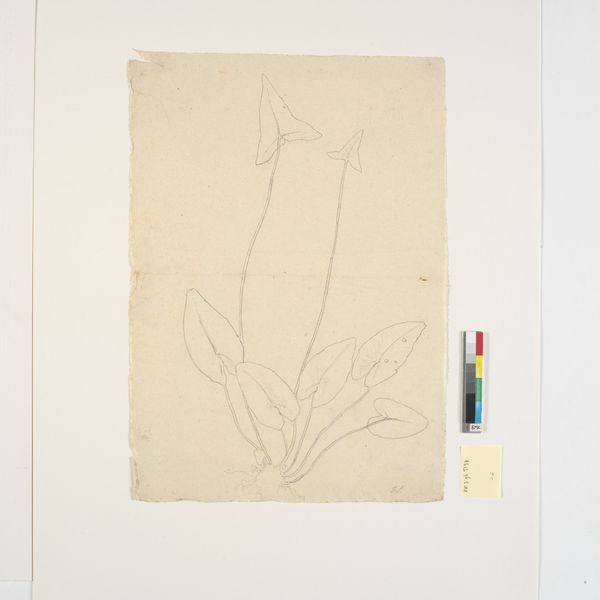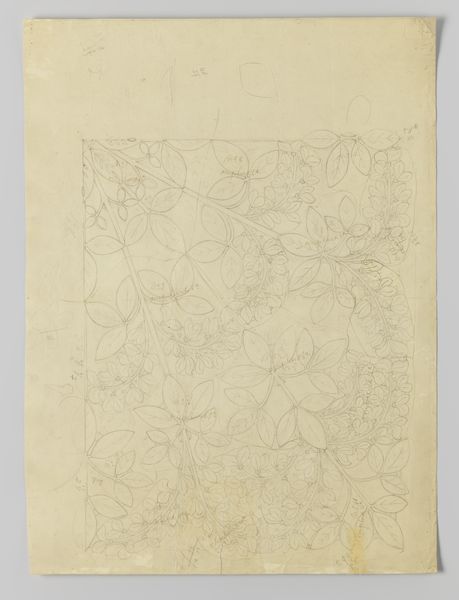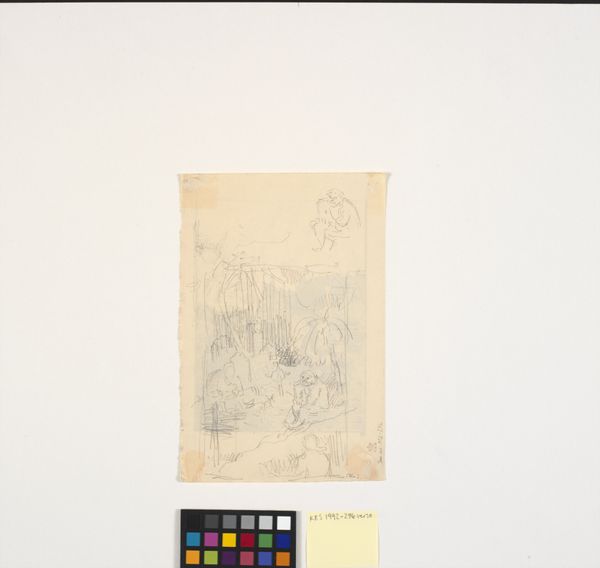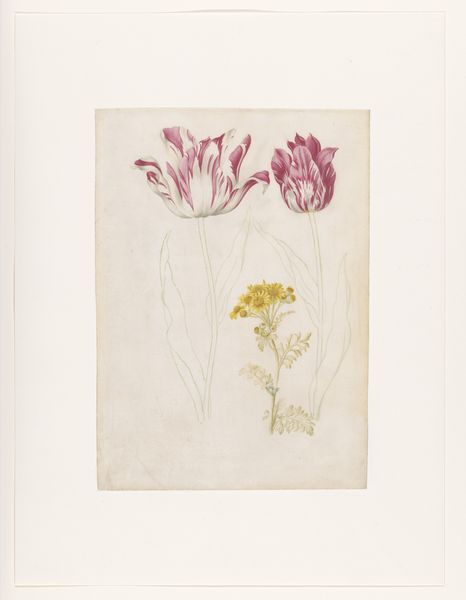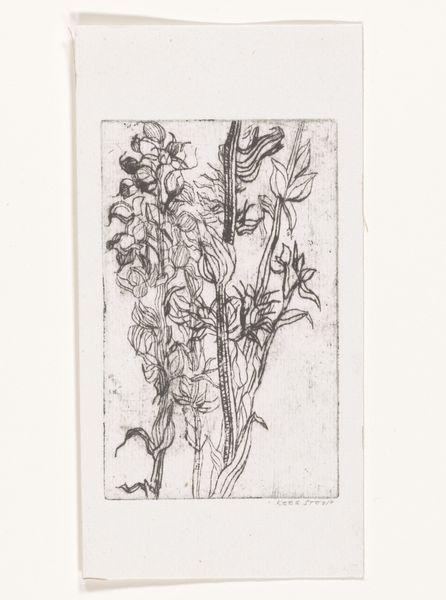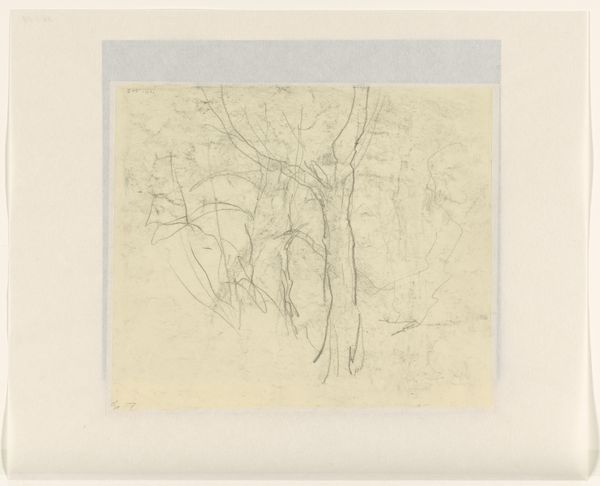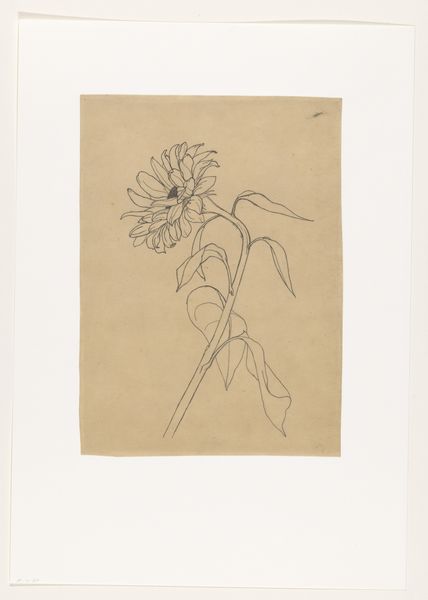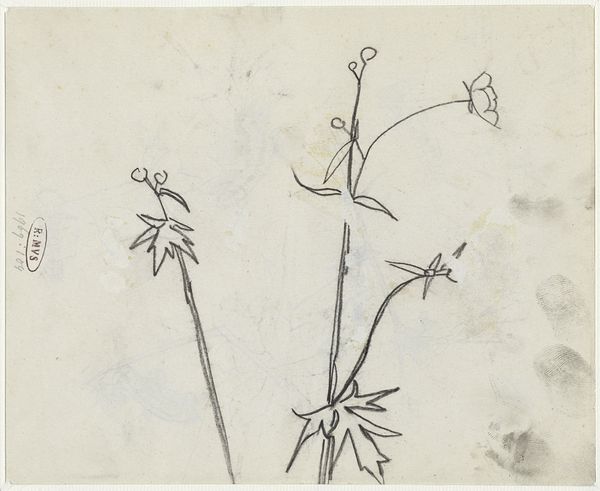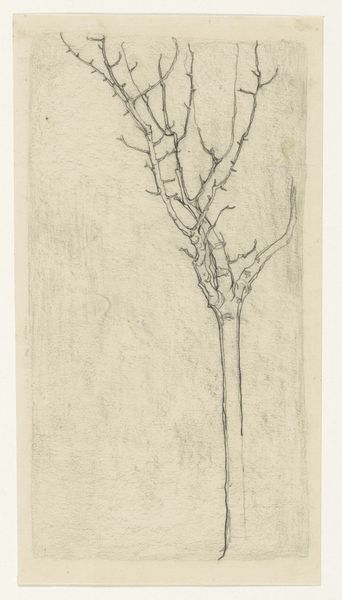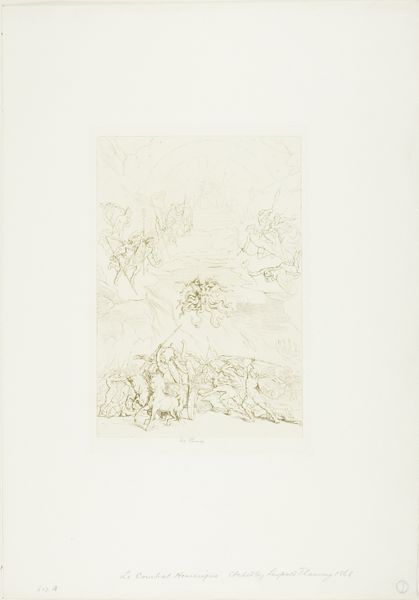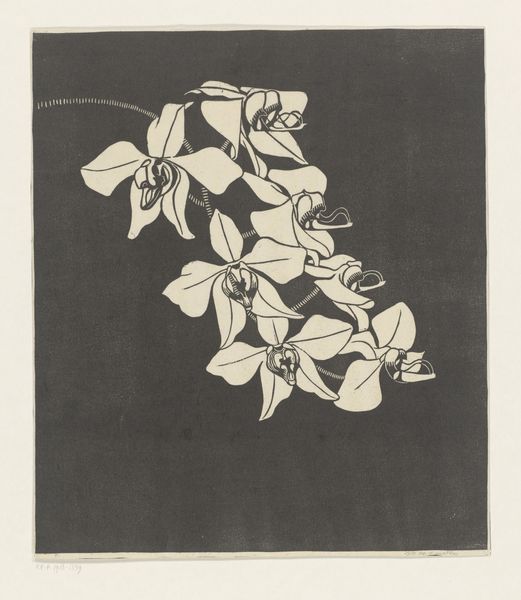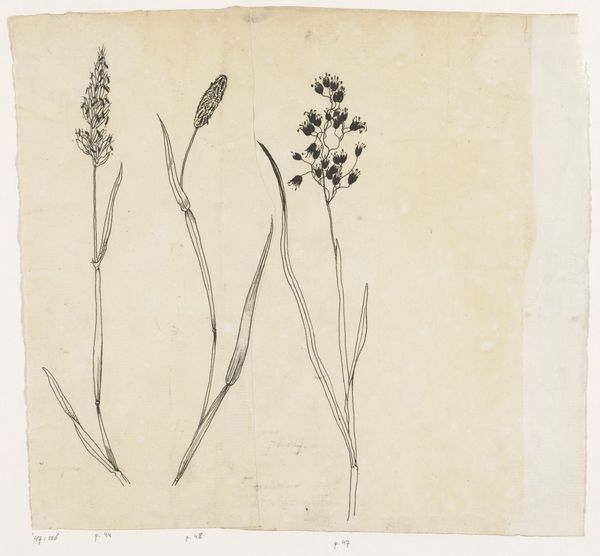
drawing
#
drawing
#
organic
#
landscape
#
line
#
realism
Dimensions: 443 mm (height) x 312 mm (width) (bladmaal), 439 mm (height) x 312 mm (width) (billedmaal)
Editor: The immediate effect is one of stillness, a hushed quality. The muted palette amplifies the rather solitary nature of the plant itself. Curator: Yes, this is "Bladplante", a drawing likely made sometime between 1856 and 1933 by Joakim Skovgaard, held here at the SMK. Look at the elegant simplicity achieved through the sheer mastery of line. Editor: There is an apparent focus on rendering. The emphasis on realism is palpable – can we speak to what drawing allows an artist to convey about the natural world here? Was this created as study material? Curator: Indeed, it's less a "finished" work than a rigorous exercise in form. Notice how Skovgaard meticulously delineates the internal architecture of each leaf. It reads less as mere observation and more like an attempt to grasp the intrinsic structure, almost an analysis. Editor: Considering that this work uses just pencil on paper, I start wondering about the socio-economic implications for its existence. Was Skovgaard a prolific draughtsman for personal study, or were such botanical studies popular amongst the wider buying public? And the act of drawing itself – we may also want to ask about the environmental impact too? Curator: Materially, of course, it’s incredibly simple but not simplistic, that's an important distinction. Its power lies precisely in its reduction to essential elements. Look at how the delicate tonal variations model each form without sacrificing its linear integrity. I find a quiet harmony that persists due to Skovgaard’s formal approach to subject matter. Editor: It makes one conscious about the fragility and temporality that underpins it. Considering the tools that might have been available to Skovgaard, his selection in drawing, it brings the social reality of production sharply into focus. The very act of sketching this reveals an engagement in materials readily available that shapes the world we encounter today. Curator: Precisely, this piece embodies something transcendental. This image reveals that within the structure itself, it represents nature that transcends both time and materials. Editor: Reflecting on our chat, I see art not merely as aesthetics, but also social and material circumstances that shape what is drawn, why it is drawn, and how we receive it. Curator: Agreed; both points certainly converge here, creating something of true substance and lasting beauty.
Comments
No comments
Be the first to comment and join the conversation on the ultimate creative platform.
